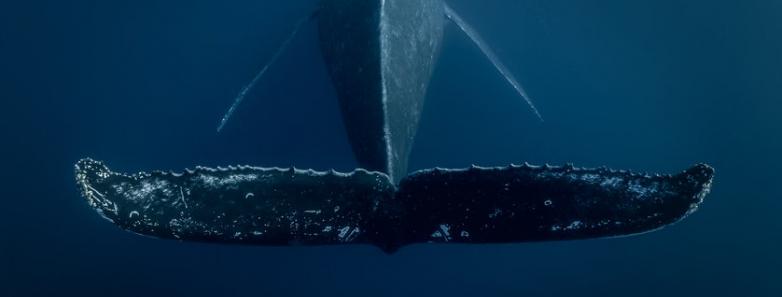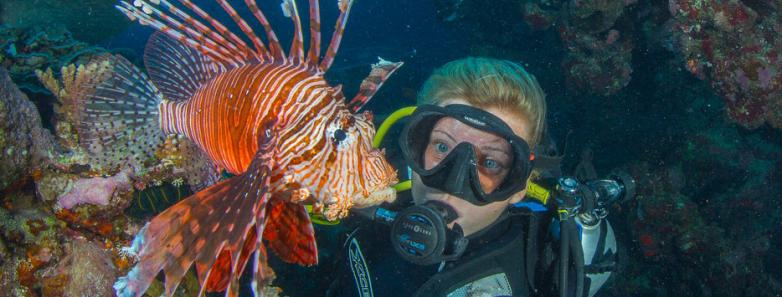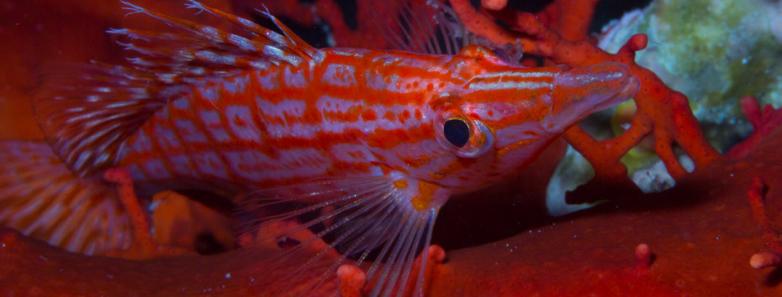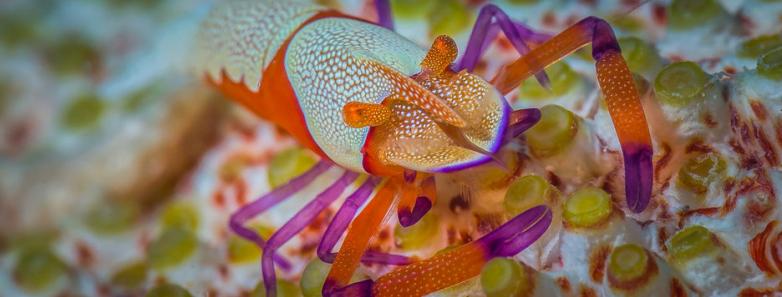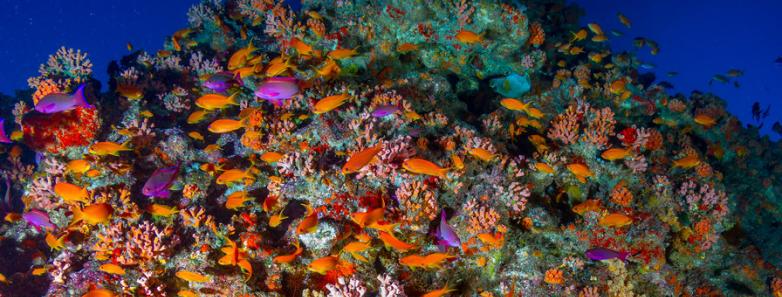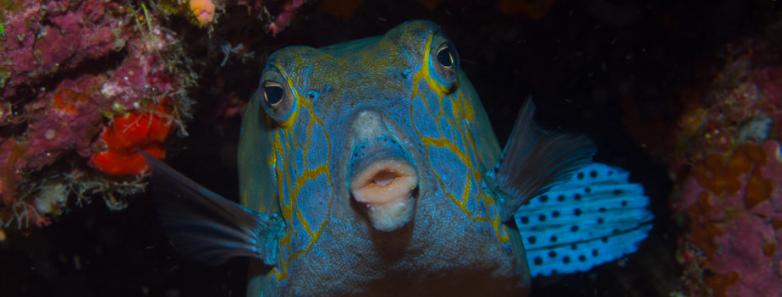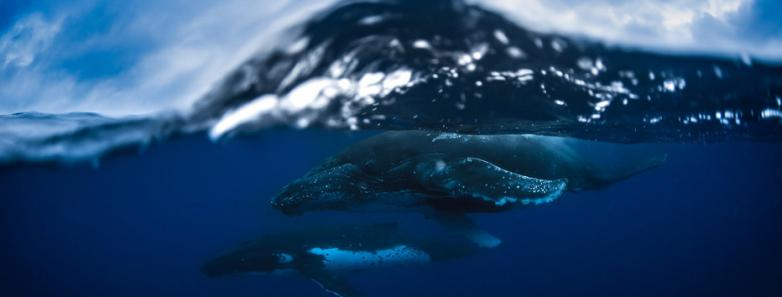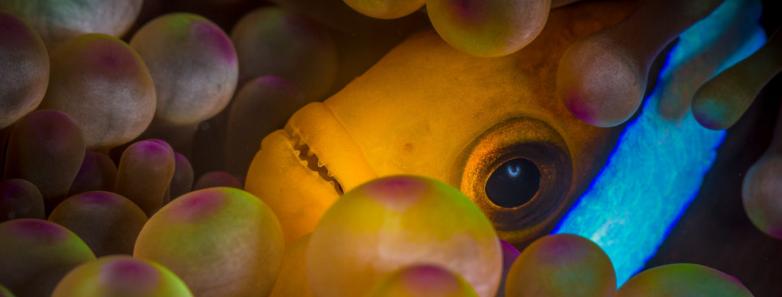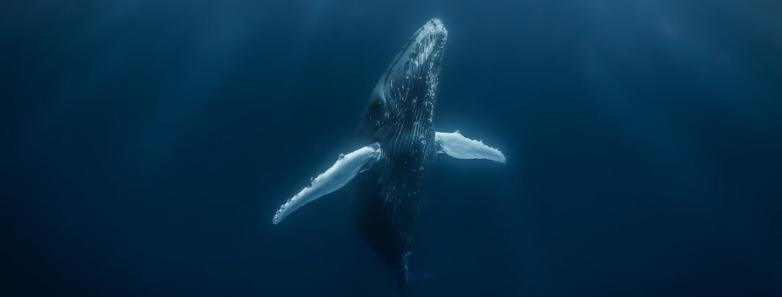Scuba Diving in tonga
Tonga Diving Highlights
Tonga is known as one of the few places in the world where you can swim with humpback whales in the water. These magnificent beasts pass through the islands between the months of July and October in order to mate and give birth. They then leave for their Arctic feeding grounds.
In addition to humpback whales, divers can encounter manta rays, eagle rays, many shark species, and other diverse marine life in the area. The underwater geography is just as diverse as its marine life; with dive sites containing everything from coral gardens to caverns and vertical walls, Tonga truly has something for everyone.
Jump to:
Marine Life & Environment - Top Dive Spots - Diving Conditions
*Photos and video courtesy of Sandy Beach Resort
Where Is tonga?
Tonga is comprised of 169 islands located in the Southern Pacific Ocean. Stretching over 800 kilometers and with a total surface area of 750 km², only 96 of these islands are inhabited. Tonga lies South of Samoa, another stunning destination with lots of great thing to do, about a third of the way between New Zealand and Hawaii. Tongatapu is the country's main island and where most of the inhabitants live. Tonga is also called the Friendly Islands because of its friendly reception toward Captain Cook during his first visit in 1773.
Check out an awesome video of Tonga below!!!
Diving information
Marine Life & Photography Subjects in Tonga
Tonga is home to a wide array of marine life, ranging from the enormous humpback whales to sea turtles and manta rays. Manta rays, eagle rays, tuna, marlin, and a variety of sharks can also be encountered during dives.
Humpback whales can be found in Tonga from July to October. They pass through these islands to mate and give birth before they leave for their Arctic feeding grounds. Tonga is one the few places on earth where in-water encounters with humback whales can happen.
The reefs of Tonga include thousands of fish species such as barracuda, butterflyfish, clownfish, and tuna. They also contain varieties of shellfish such as crabs and shrimp.
Best Dive SItes IN tonga
Tonga's warm waters and breath-taking reefs are filled with incredible tropical fish that make the location a diver's paradise. The main draw for tourism on these islands is swimming with the humpback whales. Tonga is one of the only places in the world where divers can interact with and observe these magnificent creatures in the water. The best place to encounter humpback whales is at Hunga Magic, Vava'u.
On top of the chance to observe humpback whales in the water, visitors can also expect to see an abundance of other marine life year-round. While their reefs include thousands of fish species such as barracuda, butterflyfish, clownfish, and tuna, varieties of shellfish such as crabs and shrimp can also be spotted. Manta rays, eagle rays, tuna, marlin, and a variety of sharks can also be encountered during dives.
Tonga's reefs are some of the most unique and extensive coral environments that can be found in the central South Pacific area. With over 1,500 square kilometers of reef area containing both hard and soft corals, Tonga reefs ensure a beautiful and colorful dive. As 75% of Tonga's islands are uninhabited, many of their reefs are left almost untouched by human activity.
What it's like to dive TOnga
When looking to encounter humpback whales, visitors can go via open boats or private charters. The majority of the day is spent on the lookout for the whales; and when they are spotted, the experienced captain and guides will tell you when to get into the water with them to time the interaction as best as possible. It is important to be calm and quiet when entering the water because whales tend to swim away when they hear a lot of noise from the surface. Photographers can get excellent shots from these encounters if they are properly executed.
Vava'u offers divers some exciting drift dives along walls and drop-offs. Here, divers can see the occasional white tip, blacktip, and Grey reef sharks. Macro life is also abundant here with nudibranchs, crabs, shrimps, and small fish.
Most dive sites are a 20-minute boat ride away from the harbor and feature gorgonian fans as well as soft and hard coral gardens. The reefs are healthy, and visibility often exceeds 100 feet.
Diving Conditions
Here's what the diving conditions look like in Tonga.
Water Temperature: Water temperatures vary from 24C/75F to 28C/82F. Scuba diving, snorkeling, and free diving are year-round.
Visibility: During the dry season, visibility is often 100’+ at the most popular dive sites.
Weather: The warm season is from December to May, with temps in the mid-70s. The cool season is from May to December, with temps averaging 69F
Best Diving in TONGA
Here are the top scuba diving spots that you shouldn't miss while diving Tonga:
1. Hot Spring Cavern, Ha’apai
Divers can enter the Hot Spring Cavern at a depth of 25 meters and explore the impressive cavern. Inside, divers will find the hydrothermal vent which supplies the spacious cavern with warm water. This is the perfect dive site for the adventurous diver.
2. Arch of Ofalanga, Ha’apai
Diving at the Arch of Ofalanga is highly-recommended when diving Tonga. The arch is over 20 meters wide and 15 meters tall. It truly is an incredible site for divers to enjoy.
3. Hunga Magic, Vava’u
Hunga Magic is one of the best sites for divers to encounter humpback whales. The humpback whales pass through the islands to breed from the months of July to October. However, divers will need to arrange this through a licensed tour operator. Any pre-meditated encounters with whales are snorkel-only.
4. Clan MacWilliam Wreck, Vava’u
The Clan MacWilliam Wreck is a well-intact freighter, 140 meters long and was built in 1918. Located 20 - 40 meters below the surface, the wreck sits upright in the sheltered waters of the harbor. The upper deck, handrails, and superstructure are covered with a variety of corals and fish. With tons of macro life living on the wreck, it is highly recommended that divers bring a torch to be able to see into some of the larger compartments. The wreck also makes for an exciting night dive.
Related Destinations
Fiji is commonly combined with a trip to Tonga because of its rich soft coral ecosystems and amazing pelagic and shark dives. Known as "The Soft Coral Capital of the World," it is easy to see why Fiji is called a world-class dive destination, and it's proximity to Tonga allows for an awesome combo trip with exciting humpback whale swimming and mind-blowing soft coral diving all in one trip!
Travel Information
How to Get to Tonga
Most flights come from Fiji or New Zealand and land at the Fua'amotu Airport (TBU) on Tongatapu, a 30-minute drive from Nuku'alofa. However, there are some international flights that go to Vava'u. Travel from the airport to Nuku'alofa is via hotel minibusses or taxi. A typical bus into town costs T$10, while a one-way taxi usually costs T$30 (this pricing is subject to change over the years). Guests also have the option of taking a domestic flight or ferry to the surrounding islands.
When departing, tourists must pay a departure tax of T$25 or approximately USD13. This tax is charged to all passengers leaving on international flights and is paid at Fua'amotu Airport.
How to Dive TOnga
There is a range of resort-based options like Sandy Beach Resort and Matafonua Lodge from which we can plan your whale-swimming vacation.
Best time to dive TOnga
If encountering humpback whales is the main goal of your journey, the best time to visit Tonga is from the months of July to October. During these months, the humpback whales visit these waters to breed before moving on to their Arctic hunting grounds.
However, diving and snorkeling are available year-round with Tonga's tropical climate. Water temperatures can range from 24C/75F to 28C/82F, while visibility often exceeds 100 feet.
other thingS to DO in tonga
In addition to the amazing water activities, Tonga also offers many tourist attractions. You could easily spend a day or two exploring the main island of Tongatapu. The most visited site is Ha’amonga ‘a Maui, a stone trilithon also known as the Stonehenge of the Pacific.
Guests can also visit the neighboring islands to explore (a short boat ride away). At the islands, they can go snorkeling, kayaking, or lounge at the beach, then have a relaxing lunch overlooking the ocean.
There are some resorts on Tongatapu that offer cultural shows full of traditional dancing and storytelling. This fun and interactive way to learn about the local culture is also paired with the opportunity to try some of their local cuisine.
Other Useful Information
Practical Information
- Currency: Tongan pa'anga
- Language: Tongan and English
- Time Zone: GMT+13
- Electricity: 240 V 50Hz
Got Questions? Ready to Book?
Call us today at +1-310-915-6677 or email us info@bluewaterdivetravel.com
And let us book your dream vacation!

